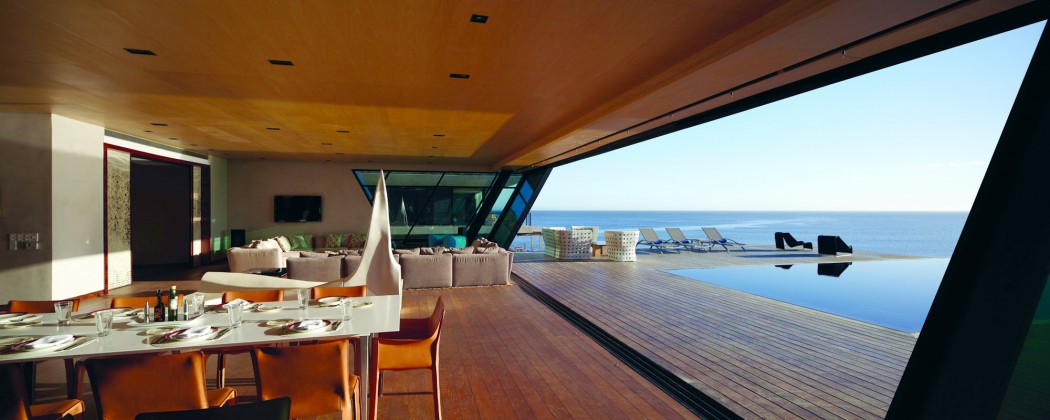Ralph Lauren, Naomi Campbell and fashionistas love the unspoilt coastline in this little-known country. The Times fashion director checks it outI thought I couldn’t care less about birds. Matters ornithological played no part in my decision to go to Uruguay, a small, underpopulated chunk of Latin America sandwiched between Argentina and Brazil. I had no idea that, even by the impressive standards of the continent, this country punches above its weight twitching-wise, nor, unsurprisingly, that Uruguay means “river of birds” in the extinct native language of Charruan.
No, I wanted to go there because I had heard that its Atlantic coastline was a glorious incarnation of the end of the world, wild and wonderful in equal measure. But the birds! Oh, the birds. They were so beautiful, so ludicrously amped up. And was it my imagination or were they flirting with me? “Hey, look at us!” they seemed to be saying. Swallows with exaggeratedly long tails; large blush-hued thrushes that tapped at my window every morning, the only alarm call I have ever enjoyed; tiny scarlet ground-nesters that would fly up like a shattered ruby as I walked the dunes that flanked the deserted golden beaches.
Few British people make it here and I am not going to pretend it isn’t a long way away. Yet it is very much on the map for fashionable New Yorkers, and it’s almost as far away from them. And it’s not short of A-lister visitors, including Shakira, Ralph Lauren, Naomi Campbell and Princess Caroline of Monaco.
You can fly in via Montevideo — the country’s usually low-key capital, which loses its head over carnival from late January to early March — or through neighbouring Buenos Aires, which has more to offer in terms of conventional sightseeing (an interconnecting flight is only 40 minutes).
Why do those glam Manhattanites love Uruguay so? Because of its coastline, which unwinds over 660km (410 miles) and which, apart from the Costa-style horrors of Punta del Este, is still largely untouched by man. When I visited in November, the beginning of the season, I pretty much had the place to myself. In high season, which is Christmas and new year, it supposedly gets busy in chic retreats such as José Ignacio. Or so I was told, but a Vogue editor friend who went one new year — for a house party being held by a zeitgeisty New York fashion designer — said there were all of 25 people on the beach.
This, after my fortnight of playing at Robinson Crusoe, sounds like 24 people too many. Uruguay does this to you. When I go back — and I am determined that I shall — it will be in March, which apparently offers the perfect combination of fabulous weather and nobody else.
José Ignacio is the apex of Uruguay cool; a former fishing village built on a rocky headland flanked by two never-ending beaches that follow the typical blueprint here: the ocean-facing brava with its frisky surf on one side, the more sheltered mansa on the other. The village is built around a 19th-century lighthouse and fringed with tiny coves, some sandy, some filled with drifts of amethyst mussel shells.Some local colour is provided by the bungalows and hammocks along the beach in Cabo Polonio
ALAMY
There may be some of the smartest restaurants in South America here, but the roads aren’t paved and there is nothing so 21st-century as a cash machine (as I discovered to my cost).
Traditional fishermen’s houses, whitewashed and topped with green, corrugated iron roofs, sit cheek by jowl with stunning modernist iterations of stealth wealth built for said New Yorkers, as well as affluent Argentinians and some bloke called Martin Amis. Indeed, Uruguay should be a place of pilgrimage not only for lovers of nature but of modern architecture. What little new building there is on the coast tends to be superlative: interesting yet not flashy. A stroll through José Ignacio is like watching one of the better episodes of Grand Designs.
Courtesy of the celebrated Norwegian hotelier Alex Vik (whose mother was born in Uruguay), you can even stay in a couple of hotels so architecturally distinctive as to get Kevin McCloud excited. Playa Vik, in the centre of town — such as it is — looks space-age, with a swimming pool that juts out into the wide blue yonder. Beachside Bahia Vik is a series of minimalist pavilions that nestle in the dunes.
There is a third Vik hotel a few miles inland; Estancia Vik where I stayed, is built to look like a traditional ranch from the outside, but is daringly reinvented inside, with rooms decorated by different local artists. It even has an art-adorned parillero, or barbecue room, chargrilling beef being something of a national obsession. (Meat-lovers should add Uruguay to their must-visit list. Order a mixed grill at a restaurant and you will be asked if you want one steak or two.) Oh yes, and then there’s the private polo field. It’s that kind of place.Estancia Vik has the appearance of a ranch but is daringly reinvented inside
Set on a grass plain of 4,000 acres, with a meandering river, clusters of ancient ceiba and coronilla trees, and grazing horses and cattle, Estancia Vik represents the other side of Uruguay: cowboy country. You can ride for hours on one of the stable’s hardy criollo horses, uninterrupted by people, buildings or roads; the only thing you need concern yourself with is whether you can manage a brace of prime rib when you get back to the (quite literal) ranch. The landscape feels quasi-European — you can see why 18th-century Spanish settlers felt at home here — but also, in its vastness, its endlessness, ravishingly other.
Farther inland is the town of Garzón, like something out of a John Wayne film where, somewhat incongruously, the celebrated Argentine chef Francis Mallmann runs one of the best restaurants on the continent, as well as five rooms, for those who can’t move anywhere fast after a plate of roasted piglet.
Back to the coast and ruta nacional 10 heads northeast out of José Ignacio and back in time. First there’s the Garzón ferry, which takes you over the lagoon of the same name. It’s a charmingly gimcrack affair, tiny — I found myself breathing in as I drove on to it — and though it was originally winch-operated, it is now towed by a tired-looking motorboat. Once across the water ruta nacional 10 becomes track nacional 10. Actually it’s more of an unpaved road than a mere track — good enough for the locals to bomb along at 90km an hour — but still. It is flanked on one side by more of those endless deserted beaches and on the other by empty grasslands and forests. The drive is exhilarating for those of us who come from the overstuffed Old World. (Indeed, driving in Uruguay generally is positively enjoyable, the landscapes breathtaking, the wide straight roads empty, the few drivers you meet courteous.)Cabo Polonio, which has no roads leading to it, is accessible only by cross-country vehicle
ALAMY
La Pedrera is quaint former fishing village number two and has a lovely relaxed boutique hotel called Brisas de la Pedrera, a pretty (and minuscule) historic centre and more of those architectural McCloud-pleasers. Even in high season there is less of a scene here than in José Ignacio. Strung out along the beaches are small fair-weather communities, with homes ranging from simple wooden huts to more modernist beauties, many of which can be rented on websites such as Airbnb.
From La Pedrera you can make a day trip to the off-grid settlement of Cabo Polonio, farther east on a wind-and-wave-whipped headland that one can’t help suspecting the Atlantic is thinking about reclaiming as its own. Leave your car by the road and take one of the scheduled cross-country vehicles that cover the 6km across the sand to a higgledy-piggledy community of huts, hippies and some very happy-looking seals. And the ocean, of course, looking truly epic even by Uruguayan standards. The end of the world? I think I may have found it.
Need to know
Anna Murphy was a guest of Journey Latin America (020 8600 1881, journeylatinamerica.co.uk), which has ten nights’ B&B, staying for two nights at the Sofitel in Montevideo, four nights at Estancia Vik in José Ignacio, and two nights at Brisas de la Pedrera in Rocha, starting from £2,436pp. The price includes flights from Heathrow, car hire and B&B


